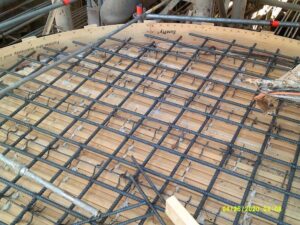
Written by Jimmy Allman | Technical
Chemical tanks that are used in manufacturing applications are inspected and monitored closely because they are important parts of production that produce revenue. For those reasons, and to meet regulatory requirements, industrial facilities need to maintain the lining systems within those vessels. However, regulations also require that secondary containment areas are compliant as well. That means that these exterior storage areas also need to be inspected, maintained, and repaired as needed.

Why Do Containment Areas Require Inspections?
Complying with the regulations of various environmental and occupational agencies will help you avoid paying fines for not meeting critical standards of storing hazardous materials. But compliance isn’t the only reason that it’s important to maintain and inspect exterior containment areas at your facility. There are numerous others, including:
- Leak prevention – When there is a leak of hazardous chemicals it isn’t as simple as just mopping a floor for cleanup. There are special protocols, and it may require time and expense that you haven’t budgeted for.
- Polluting the environment – If there are equipment failures that cause hazardous chemicals to get into the ground, there may be environmental factors to be concerned with.
- Loss of material – The materials that are stored in the secondary containment area are assets. If there is a leak, you are losing a valuable product that has a monetary value.
- Damage to other assets – Depending on where there is a breach in containment, other equipment, structures, tools, etc., could be subject to damage or disrepair.
- Facility shutdown – In extreme situations, a leak that happens in a containment area can be significant enough that a shutdown is necessary. This can either be as a result of an order from a regulatory agency, a shortage of materials, or a hazardous workspace that has to be cleaned.
While regular, scheduled inspections cannot catch every issue that may come to pass at your facility, they can help minimize equipment failures and the resulting downtime. It is well worth the expense of an inspection to help keep your facility up and running more efficiently.

Signs There is Something Wrong between Inspections
You never know when an unexpected issue is going to happen in the secondary containment area of your facility. Typically, it’s an area that doesn’t have as much traffic as other parts of the facility, so problems can go unnoticed for some time. To stay safe and keep losses to a minimum, you can look for the following signs to identify equipment failures sooner rather than later:
- Visible leaks – Perhaps the most obvious (but still important), is looking around to see if there are any visible leaks in any of the containers.
- Blistering or bubbling of coatings – The protective corrosion-resistant coating that is applied to surfaces that may come into contact with hazardous materials shouldn’t be bubbled, blistered, or separating. If it does, it may mean that there is a leak somewhere.
- Concrete expanding or deteriorating – Like the coating, the concrete of the secondary containment area should look smooth, with no cracks, buckling, or deteriorating edges. If you notice any of that, there may be a problem.
- Exposed rebar – The rebar that is used in the concrete shouldn’t be visible. If the concrete around it is coming apart and the rebar is showing, then it needs to be checked.
- Wet soil – If the soil around the containment area is unexplainably wet, that is cause for concern. Hazardous chemicals soaking into the soil can be an environmental issue and could have serious consequences.
The above signs should never be ignored. When these issues are noticed they need to be addressed right away to prevent more and bigger problems.
Keep Your Secondary Containment Areas Safe with SVI Industrial
SVI Industrial’s capabilities and experience in the industrial masonry division are your best source for the design, inspection, and maintenance services of all your containment areas, as well as tile tank vessels, process vessels, sumps, pits, and trenches. Our engineers and technicians have decades of experience taking care of paper mills, power plants, and many other industrial facilities.
Let us provide you with a comprehensive inspection, detailed reporting, and a partner in determining your future maintenance needs.
